Mist was covering the Downs for most of the weekend but it cleared in time to fit in a short walk on Devils Dyke before darkness fell on Sunday. I had planned a longer walk but as time was short just took a direct route down the hill through the holt around the old funicular track; this must be the steepest slope on the Dyke! The Ash woodland isn’t very old as the area was clear when the funicular was operating during the Victorian era.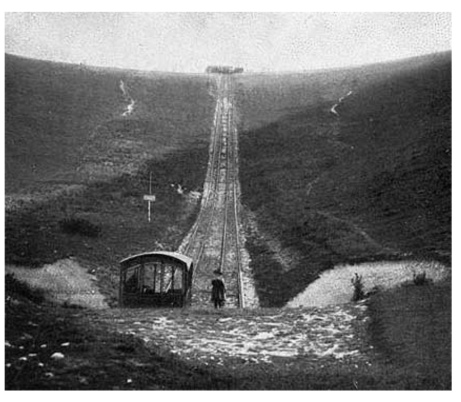
An Ash tree near the top of the holt was covered in a dark green long leaved acrocarp. Some of the leaf tips were broken off but ones that remained were pointed and slightly wavy. It was Didymodon sinuous, not found very often but I’ve noticed can be abundant on trees when it does occur. I last found it below Bopeep where it covered a fallen Ash tree.
Other finds were more predictable but I couldn’t find any gemmae on some Zygodon that I collected, (on a previous visit I recorded Z. conoideus). Eurhynchium striatum covered the ground but there was more to be found on the trees. Fluffy Ctenidium molluscum covered roots of Ash trees, lurid lime green with the texture of towelling. Hypnum cupressiforme was fruiting as was Metzgeria furcata. Elsewhere Cryphaea heteromalla fringed Elder branches. Small cushions of Ulota bruchii and Orthotrichum affine were only occasional. I didn’t spot O. lyellii which I found here on a previous visit.
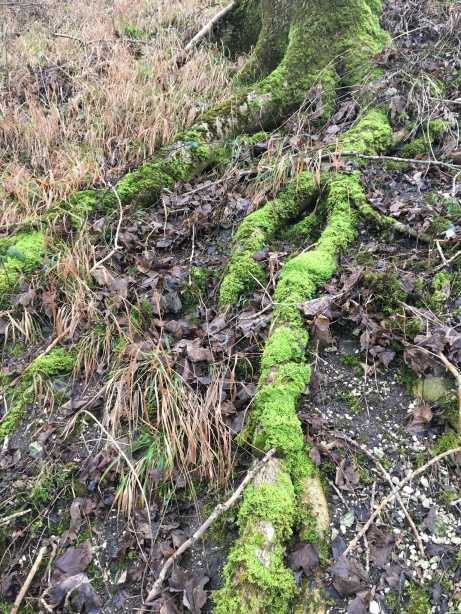
Ctenidium molluscum on Ash roots
Further down the slope Fissidens taxifolius clung to the bank and the odd bit of loose chalk had fruiting Seligeria calycina. The steep scree slope seemed a bit unstable to support much bryophyte growth but I don’t think many people or creatures attempt this route so the Seligeria was left to grow in peace.
A fallen tree had conveniently flattened a barbed wire fence so I was able to reach the lower, damper slopes. Here I found Neckera complanata and Dicranum scoparium on Ash bases but some of the trees here were suffering from Ash dieback. At the bottom of the hill I reached a narrow footpath and one large,mature Ash. This had more D. Sinuous as well as a few strands of Porella platyphylla and an area of Anomodon viticulosus at its base.
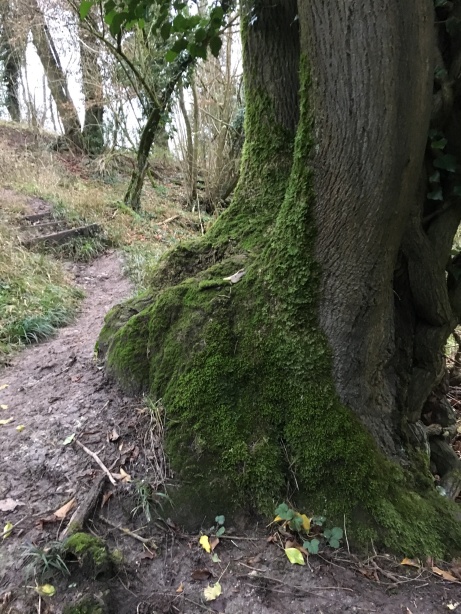 I followed the footpath for a few yards then stumbled across a stile at the foot of the funicular track which was dedicated to old Brighton friend Johnny who used to fly kites from the Dyke. There was no sign of a footpath on the other side! The bottom of the hill was a mass of brick rubble with thick forests of Thamnobryum alopecurum, a common moss on the lower slopes of downland holts. Some of the bricks were covered in a tiny, fruiting Fissidens with very long perichaetal leaves and a strong border. I conferred with Tom who suggested I check for F. crispus but then found a bit more, an almost identical specimen growing on chalk so we agreed it must be F. gracilifolius.
I followed the footpath for a few yards then stumbled across a stile at the foot of the funicular track which was dedicated to old Brighton friend Johnny who used to fly kites from the Dyke. There was no sign of a footpath on the other side! The bottom of the hill was a mass of brick rubble with thick forests of Thamnobryum alopecurum, a common moss on the lower slopes of downland holts. Some of the bricks were covered in a tiny, fruiting Fissidens with very long perichaetal leaves and a strong border. I conferred with Tom who suggested I check for F. crispus but then found a bit more, an almost identical specimen growing on chalk so we agreed it must be F. gracilifolius.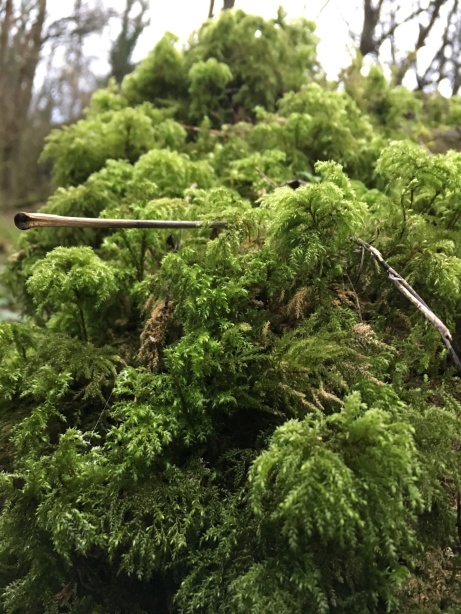
The National Trust might be planning on creating a stepped footpath in the future but for now I had to scramble back up the hill. Once above the trees the slight depression where the funicular tracks used to be supported a rich mix of grass with Rhytidiadelphus triquetrus, Pseudoscleropodium purum and a few shoots of the lovely moss Entodon concinnus.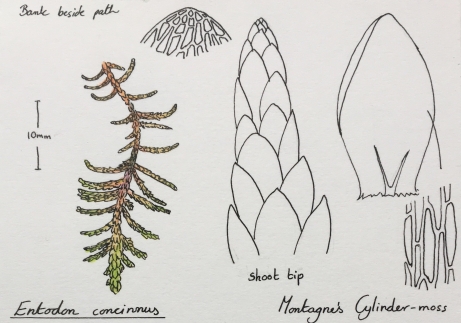
This is a well recorded tetrad but the Anomodon and F. gracilifolius were new and the tally is now 101 taxa. It was also good fieldwork revision after almost a month away!
Two days later, on New Year’s Day I found myself heading down the same hill. I wanted to check a grid reference at the top of the holt but I then skirted the steep woods, taking a slightly easier descent over a field of ant hills interspersed with bushy R. triquetrus. I checked the old Ash tree on the lower path and found a few more mature trees. A few curls of Leptodon smithii grew just too high for me to get at with the hand lens but I managed to zoom in on it with my phone camera. It is the only bit that I have seen in this area. A few patches of moss on Ash bases were Cirryphyllum crassinervium standing out in a harsh green of vivid emerald shot through with lime.
Quite a few footballs end up in these woods below the car park and pub. This one has grown a coat of bright green Bryum (capillare?) with Barbula unguiculata and a few paler shoots of Fissidens taxifolius.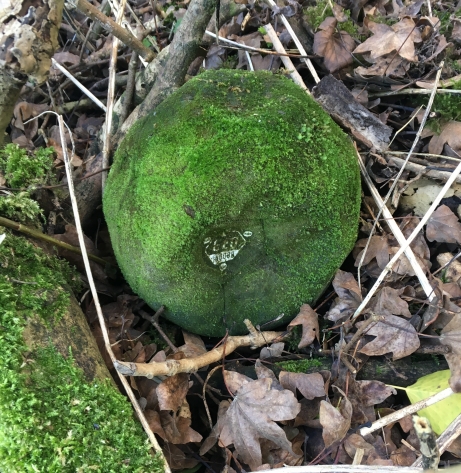
For a change I took a proper path back up to the top, Leicolea turbinata growing in the compressed earth by the steps, Neckera crispa forming ruffs around the bases of a few skinny Ash trees and Radula complanata making attractive rosettes with Frullania dilatata on Ash took my mind off the endless steps. I was now in TQ21Q but these records weren’t new for the tetrad.
None of the finds on the second days recording were new to TQ21K either but it’s always good to find new spots for Prince of Wales Feather-moss.
